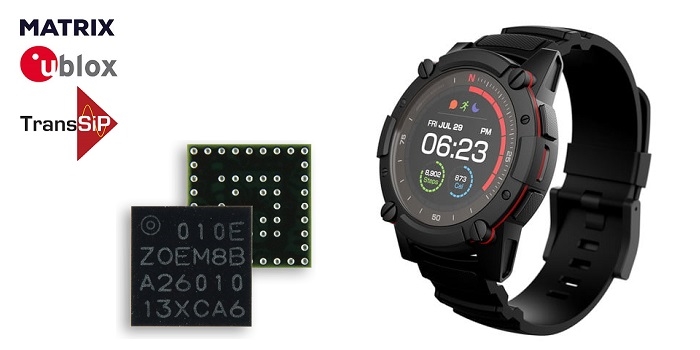
u-blox, together with global Power Integrity expert, TransSiP, and thermoelectric innovation leader, MATRIX Industries, has introduced PowerWatch 2, the world’s first GPS smart-watch that never needs a recharge. The smart-watch features the ultra-small, ultra-low power u‑blox ZOE-M8B GNSS receiver to track position, in addition to calories burned, activity level, and sleep, making it an ideal companion for runners, hikers, and swimmers. All this is enabled by TransSiP’s PI technology which ensures energy harvested is used at maximum efficiency and provides crystal clean power enabling optimum performance.
The PowerWatch 2 is the first GPS smart-watch to offer a 100 percent charge-free experience. It does away with cables and external batteries by continually topping up its battery using thermoelectric energy generated from body heat as well as solar energy. The watch also excels at the other things smart-watches do, like connecting to a smartphone and displaying notifications on the wrist, tracking activities and visualizing them using dedicated iOS and Android apps, as well as with popular third party health and fitness platforms.
The ZOE-M8B and TransSiP PI
The PowerWatch 2 delivers location tracking using the low-power u‑blox ZOE-M8B GNSS receiver module that consumes as low as 12 mW. Packaged as a System-in-Package, the 4.5 x 4.5 x1.0 mm module helps achieve the watch’s comparatively low 16-millimeter thickness. Concurrent reception of up to three GNSS constellations means that it delivers high accuracy positioning in challenging situations such as urban or dense forest environments and when swimming.
Satellite based positioning is typically the most power-hungry process on a sports watch. Providing highly efficient conversion of harvested energy into a very quiet supply of DC power, TransSiP PI enhances the ability of the ZOE-M8B GNSS receiver module incorporating u-blox Super-E technology, to strike an ideal balance between power and performance. Working on a tight power budget, the watch supports 30 minutes of continuous GNSS tracking per day, with unused time accumulating in the watch’s battery pack, e.g., powering two hours of location tracking every four days.
Backers of the project on Indiegogo are expected to receive their orders in June, 2019.